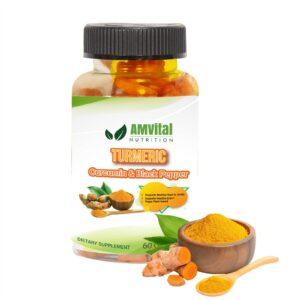Introduction
Turmeric is a spice that has been used for thousands of years in both Eastern and Western medicine. It is a key ingredient in many curries, and it gives mustard its distinctive yellow color. However, turmeric has many more benefits than just adding flavor to your favorite dishes! From its anti-inflammatory properties to its ability to fight cancer and diabetes—these are only some of the ways turmeric can improve your health and wellness.
Turmeric as a spice
Turmeric is a spice that has been used for thousands of years. It is native to South East Asia and India, and has become an indispensable ingredient in many cuisines across the world. Turmeric’s deep yellow color comes from curcumin, which gives it its unique flavor and color.
Turmeric as a Spice
Turmeric can be found in curry powders, saffron-colored rice dishes (in India), mustard sauces (in China), and in several other foods around the world. It is also used by itself to add flavor and color to foods like scrambled eggs or salads.
The origins of turmeric
The origins of turmeric
Turmeric comes from a plant in the ginger family called Curcuma longa. It is native to India and Southeast Asia, where it has been used for thousands of years as a spice, food dye and medicine.
How to use turmeric as a spice
- Add it to soups and curries.
- Sprinkle it on rice or quinoa.
- Add it to salad dressings.
- Mix it into your smoothie for an easy turmeric elixir!
- Use as a marinade for meat and fish before grilling, baking, or broiling.
Turmeric supplements
Turmeric supplements are a convenient way to get more turmeric in your diet. They can be used as an alternative for cooking and baking, but you should be aware that their effectiveness has not been tested in clinical studies. If you decide to take turmeric supplements, you will want to make sure that you are getting the best possible product for your money; this involves researching different brands and comparing them based on ingredients, price point and reviews from other customers. It’s also important that you find a brand that includes some form of bioavailable curcumin in its formula (check out our guide on how much curcumin is actually in the supplement).
Some people may experience mild side effects when taking turmeric supplements such as nausea or stomach upset while others may notice no adverse reactions at all. It’s best not to consume more than 2g of turmeric daily unless otherwise directed by a doctor or pharmacist since the herb may interact with certain medications such as blood thinners or painkillers like ibuprofen & aspirin
Conclusion
Turmeric is a spice that has been used for thousands of years in India. It’s also known as “Indian saffron” because of its bright yellow color and the fact that it grows wild in the foothills of the Himalayas. The active ingredient in turmeric is curcumin, which has powerful health benefits that have been proven by science time and again.







